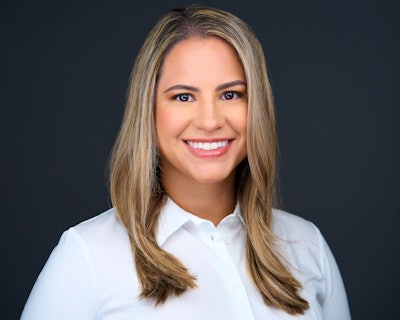As we turn the calendar to a new year, thoughts come to mind about what we can do to create a happier, more prosperous practice environment. We want new patients, and we want to keep existing patients. We want a long-term dedicated staff rather than turnover.
You may be a new dentist or have recently purchased your first practice. Bravo!
Most advice on coding and billing is passed down from one administrator to the next. My advice is to do your research and not rely solely on information received from the dental service organization administrators or the reigning office manager at the practice where you were an associate.
 Estela Vargas, CRDH.
Estela Vargas, CRDH.
This two-part article will address the connection between treatment presentation and dental insurance billing and their contribution to practice success. Suppose you are an in-network preferred provider organization (PPO) or an out-of-network PPO.
Either way, you want to serve your patients best. You must give them a treatment estimate that is as accurate as possible by verifying coverage, the history, benefits, and policy limitations. Estimating out-of-pocket costs can be difficult in some circumstances, as some treatments can change unexpectedly in the treatment room. Patients need to understand that and be prepared.
Tip No. 1: Develop a theoretical and empirical understanding of CDT codes
To give a knowledgeable treatment estimate, the presenter should understand the procedures and the treatment sequence, what current dental terminology (CDT) codes are payable, and in what circumstances these procedures are necessary, knowing which codes are billed separately or are not payable when billed in conjunction with other codes.
The front desk administrator often presents many treatment plans, hurrying to schedule an appointment before the phone rings. Treatment plans should be scheduled in a quiet, uninterrupted corner or room where patients can ask questions and gain confidence.
Tip No. 2: Communicate procedures simply and thoroughly to patients
It is important to understand patients and how they respond to treatment plans presented on paper. Seeing a paper list and a pen with which to sign a document can be a showstopper.
Never oversell results or underestimate time. Lower patients' expectations so they are always aware of treatment sequencing over multiple appointments, the possibility of seeing a specialist, and why. It is a pleasant surprise when you undersell and there is a better outcome than expected for the patient.
CDT codes identifying procedures are numbers on a page; patients don't see the value. Patients focus on the treatment, cost, time, and possible discomfort. Later, they may ask about the procedure code when their plan denies the claim. Why did the practice bill this code when maybe another code would be paid?
Under applicable law, dental plans may be required to acknowledge CDT codes when submitted on dental claims, but they are not required to reimburse for services unless the policy dictates. Some plans may cover a code, but other plans may not.
Tip No. 3: Update your CDT coding materials annually
Do you often receive insurance denials that state "invalid CDT code"? Unfortunately, this is all too common and preventable.
From our experience, we estimate that about 80% of dental offices do not update CDT coding software or coding books regularly. We see a considerable increase in denials, delays, and disruptions in their dental practice revenue. Along with this, we see patient complaints and patients' refusal to pay their balances until the insurance issue is solved.
Every year, the CDT coding manual produced by the ADA is updated with new codes, deleted codes, revised codes, and many other changes that affect billing claims.
Take, for example, the 10 new codes going into effect January 1, 2025, as follows:
- D2956-- Removal of an indirect restoration on a natural tooth (Note: This code should not be used for a temporary or provisional restoration.)
- D6180 -- Implant maintenance procedures when a full arch fixed hybrid prosthesis is not removed, including cleasning of the prosthesis and abutments
- D6193-- Replacement of an implant screw
- D7252-- Partial extraction for immediate implant placement
- D7259-- Nerve dissection
- D8091-- Comprehensive orthodontic treatment with orthognathic surgery
- D8671-- Periodic orthodontic treatment visit associated with orthognathic surgery
- D9913-- Administration of neuromodulators
- D9914-- Administration of dermal fillers
- D9959-- Unspecified sleep apnea services procedure, by report
Are you ready to use these codes in 2025? Update your coding software and manuals now, and be prepared.
Look for more billing and coding tips in the second part of this article, which is coming soon. Please pay attention to my "from the trenches" case stories, which demonstrate how the misuse of dental codes can cause turmoil among staff and patients, loss of revenue, and raise red flags for insurance companies.
Editor's note: References available upon request.
Estela Vargas, CRDH, is the founder and CEO of Remote Sourcing, a dental insurance billing and revenue recovery service. She is a graduate of Miami Dade College's dental hygiene program. Vargas' extensive background in the clinical arena of dentistry is coupled with her experience as a practice administrator and business executive.
The comments and observations expressed herein do not necessarily reflect the opinions of DrBicuspid.com, nor should they be construed as an endorsement or admonishment of any particular idea, vendor, or organization.



















